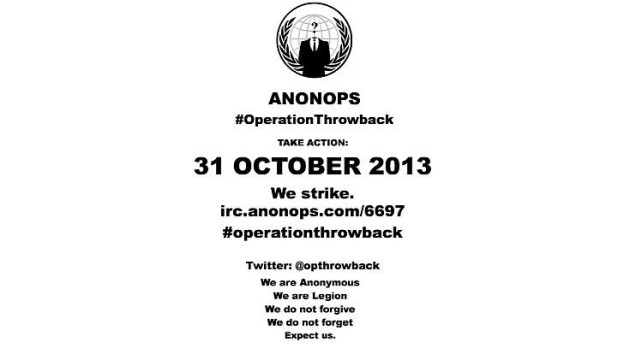WordPress installations sporting known vulnerabilities continue to be compromised by hackers and turned into distributed denial of service (DDoS) launch pads. That warning was sounded last week after IT professional Steven Veldkamp shared an intrusion prevention system (IPS) log with Hacker News , which found that a single 26-second DDoS attack against a site run by Veldkamp was launched from 569 different WordPress blogs. Those blogs appear to have been compromised by attackers, since they comprised everything from a “mercury science and policy” blog at the Massachusetts Institute of Technology (which as of press time remained offline) and a National Endowment for the Arts blog to WordPress sites run by Pennsylvania State University and Stevens Institute of Technology. “The key aspect to note here is the number of compromised WordPress servers,” said Stephen Gates, chief security evangelist at DDoS defense firm Corero Network Security, via email. “It’s a simple mathematical equation — attackers are looking to infect servers sitting in hosting environments with each server easily capable of generating 1 Gbps of attack traffic. It is quite easy to generate extremely high volumes and varieties of attack traffic by compromising just a few WordPress servers.” Once WordPress servers get compromised, attackers can use them for a variety of purposes, such as attacking U.S. financial institutions. “From volumetric attacks that melt down firewalls to the ‘low and slow attacks’ that sneak through firewalls undetected — the list is really endless,” Gates said. WordPress blogs, of course, are easy to provision and host. But that ease of installation — and use — means that such software is often run outside the purview of IT provisioning and oversight. Furthermore, many WordPress administrators fail to keep their software updated or follow security best practices, such as choosing unique usernames and strong passwords for WordPress admin accounts. As a result, numerous WordPress sites sporting known vulnerabilities — or “admin” as the admin account name — remain sitting ducks for automated attacks. Indeed, malware is often used to automatically find and exploit vulnerable WordPress installations. In August, Matthew Bing, an Arbor Security Engineering & Response Team (ASERT) research analyst, noted that the Fort Disco malware — first discovered in April 2013 — was being used to target known vulnerabilities in content management systems, backed by six command-and-control servers that were running a botnet comprised of more than 25,000 Windows PCs. “To date, over 6,000 Joomla, WordPress and Datalife Engine installations have been the victims of password guessing,” he said in a blog post. How widespread is the problem of exploitable WordPress software? According to a study conducted by EnableSecurity CEO Sandro Gauci, the list of the one million most trafficked websites — per the Alexa index — includes 40,000 WordPress sites. But 70% of those sites are running a version of WordPress with known vulnerabilities. Those statistics were relayed last week by WordPress security expert Robert Abela, who studied data that EnableSecurity’s Gauci compiled over a four-day period in the middle of September, immediately following the September 11 release of WordPress 3.6.1, which remains the latest version. In a blog post, Abela reported that of the 42,106 WordPress sites from the Alexa index identified, 19% had already been updated to the new version, while 31% of sites were still running the previous version (3.6). But the remaining 51% of cataloged WordPress sites ran one of 72 other versions, with 2% of all cataloged sites still running version 2.x, which dates from 2007 and earlier. Needless to say, many historical WordPress updates have included patches for exploitable vulnerabilities. For example, the latest version of WordPress — 3.6.1 — patched a known vulnerability in version 3.6 that would have allowed an attacker to remotely execute code. Previous versions of WordPress have also sported a number of known bugs, including version 3.5.1 (8 vulnerabilities), 3.4.2 (12 vulnerabilities) and 3.3.1 (24 vulnerabilities). All of this adds up to numerous WordPress sites that can be relatively easily hacked, based on a review of the top 10 most-seen versions of WordPress seen among the more than 40,000 counted by Gauci. “At least 30,823 WordPress websites out of 42,106 are vulnerable to exploitable vulnerabilities,” said Abela. “This means that 73.2% of the most popular WordPress installations are vulnerable to vulnerabilities which can be detected using free automated tools. Considering the number of vulnerable WordPress installations out there, and the popularity of such websites, we are still surprised … most of them haven’t been hacked yet.” Source: http://www.informationweek.com/security/attacks/wordpress-site-hacks-continue/240162060
Read More:
WordPress Site Hacks Continue
 Anonymous hackers, more precisely the ones who hacked a couple of Syrian government websites last week, have announced the start of a new campaign called Operation Throwback. ~ SoftPedia The goal of the operation is “to strike back against the oppressors of our freedom.” The hackers say they will launch distributed denial-of-service (DDOS) attacks against several high-profile websites. Today, on October 28, they plan on launching a cyberattack against the main website of T-Mobile. On October 31, they plan on attacking the website of the FBI, the NSA, Verizon, Microsoft and AT&T. The hacktivists urge their supporters to download DDOS tools and VPNs. The initiators of the operation are providing download links and instructions on how to use them. Earlier today, the hackers tested their “firepower” against the official website of the American Nazi Party. At the time of publishing NCB Interpol web site was down, apparantly from Ddos attack. Source: http://revolution-news.com/opthrowback-anonymous-to-launch-ddos-attacks-against-fbi-nsa/
Anonymous hackers, more precisely the ones who hacked a couple of Syrian government websites last week, have announced the start of a new campaign called Operation Throwback. ~ SoftPedia The goal of the operation is “to strike back against the oppressors of our freedom.” The hackers say they will launch distributed denial-of-service (DDOS) attacks against several high-profile websites. Today, on October 28, they plan on launching a cyberattack against the main website of T-Mobile. On October 31, they plan on attacking the website of the FBI, the NSA, Verizon, Microsoft and AT&T. The hacktivists urge their supporters to download DDOS tools and VPNs. The initiators of the operation are providing download links and instructions on how to use them. Earlier today, the hackers tested their “firepower” against the official website of the American Nazi Party. At the time of publishing NCB Interpol web site was down, apparantly from Ddos attack. Source: http://revolution-news.com/opthrowback-anonymous-to-launch-ddos-attacks-against-fbi-nsa/ 
